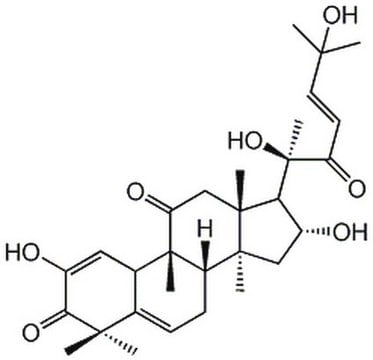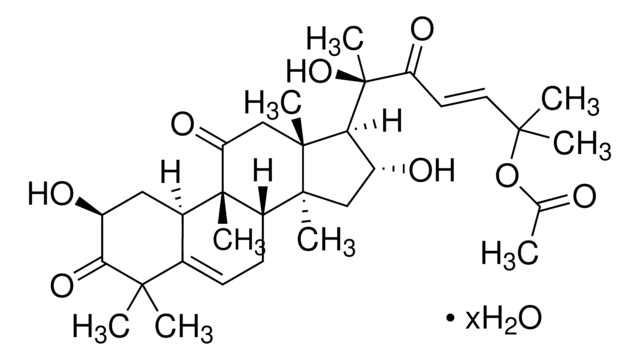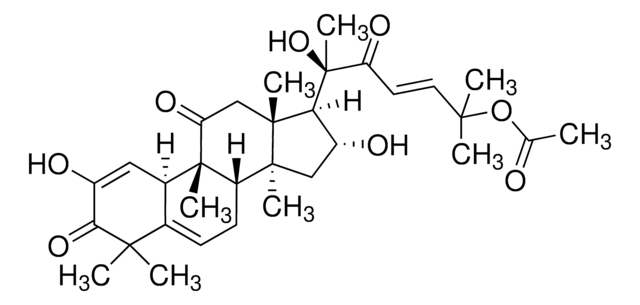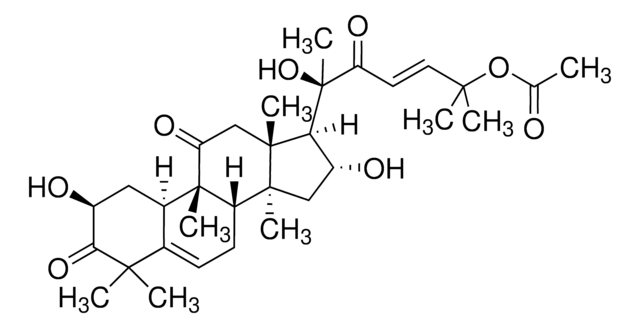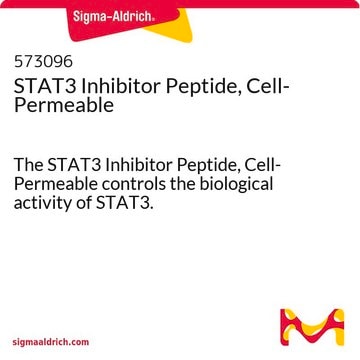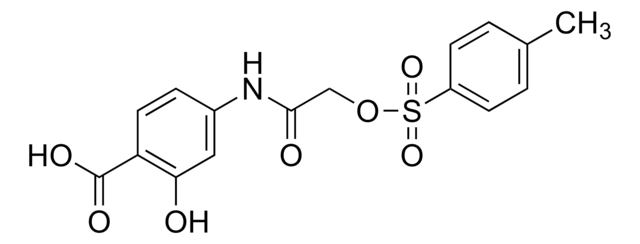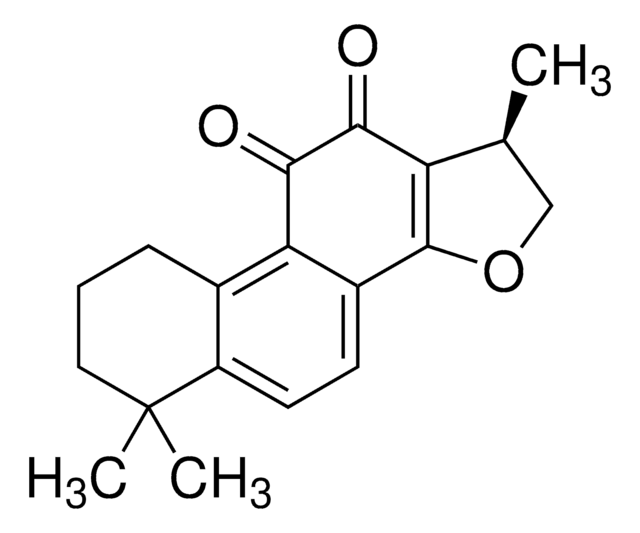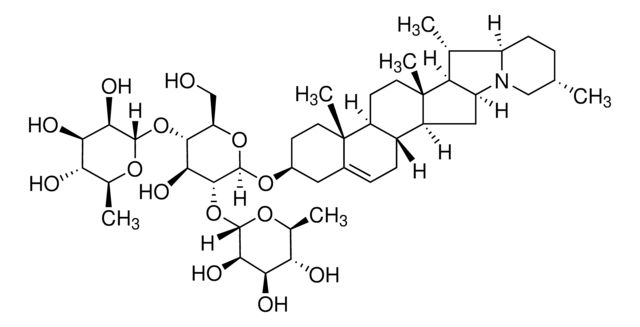C4493
Cucurbitacin I hydrate
≥95% (HPLC), solid
Synonym(s):
2,16α,20,25-Tetrahydroxy-9-methyl-19-Nor-9β,10α-lanosta-1,5,23-triene-3,11,22-trione, Elatericin B, JSI-124, NSC 521777
About This Item
Recommended Products
Assay
≥95% (HPLC)
form
solid
color
white to off-white
solubility
DMSO: >5 mg/mL
storage temp.
−20°C
SMILES string
O.CC(C)(O)\C=C\C(=O)[C@](C)(O)[C@H]1[C@H](O)C[C@@]2(C)[C@@H]3CC=C4[C@@H](C=C(O)C(=O)C4(C)C)[C@]3(C)C(=O)C[C@]12C
InChI
1S/C30H42O7.H2O/c1-25(2,36)12-11-21(33)30(8,37)23-19(32)14-27(5)20-10-9-16-17(13-18(31)24(35)26(16,3)4)29(20,7)22(34)15-28(23,27)6;/h9,11-13,17,19-20,23,31-32,36-37H,10,14-15H2,1-8H3;1H2/b12-11+;/t17-,19-,20+,23+,27+,28-,29+,30+;/m1./s1
InChI key
ZKDSPEWKSJCXQE-NEBRQAMTSA-N
Biochem/physiol Actions
Features and Benefits
Signal Word
Danger
Hazard Statements
Precautionary Statements
Hazard Classifications
Acute Tox. 1 Oral
Storage Class Code
6.1A - Combustible acute toxic Cat. 1 and 2 / very toxic hazardous materials
WGK
WGK 3
Flash Point(F)
Not applicable
Flash Point(C)
Not applicable
Personal Protective Equipment
Certificates of Analysis (COA)
Search for Certificates of Analysis (COA) by entering the products Lot/Batch Number. Lot and Batch Numbers can be found on a product’s label following the words ‘Lot’ or ‘Batch’.
Already Own This Product?
Find documentation for the products that you have recently purchased in the Document Library.
Customers Also Viewed
Articles
Discover Bioactive Small Molecules for Kinase Phosphatase Biology
Discover Bioactive Small Molecules for Kinase Phosphatase Biology
Discover Bioactive Small Molecules for Kinase Phosphatase Biology
Discover Bioactive Small Molecules for Kinase Phosphatase Biology
Our team of scientists has experience in all areas of research including Life Science, Material Science, Chemical Synthesis, Chromatography, Analytical and many others.
Contact Technical Service